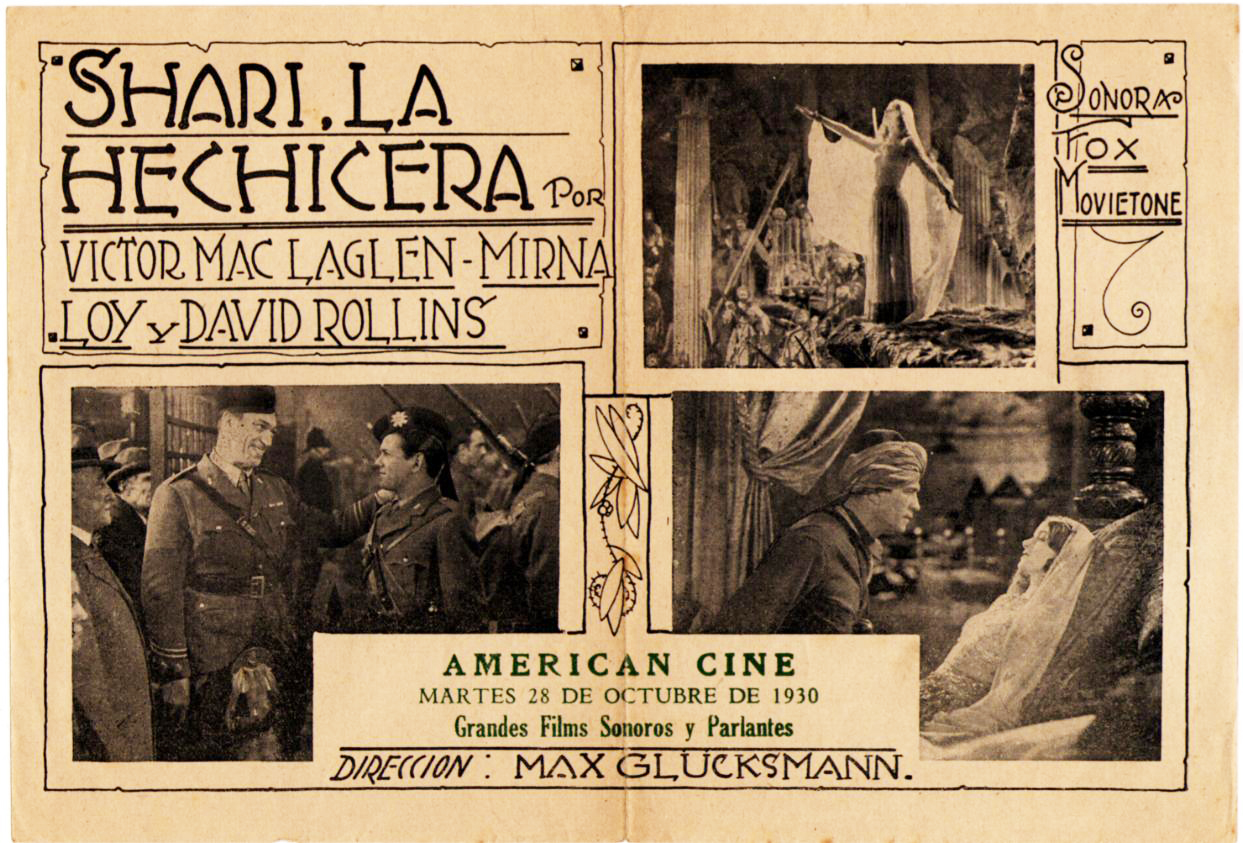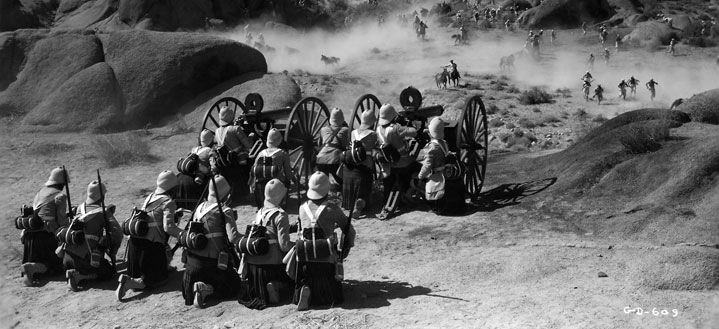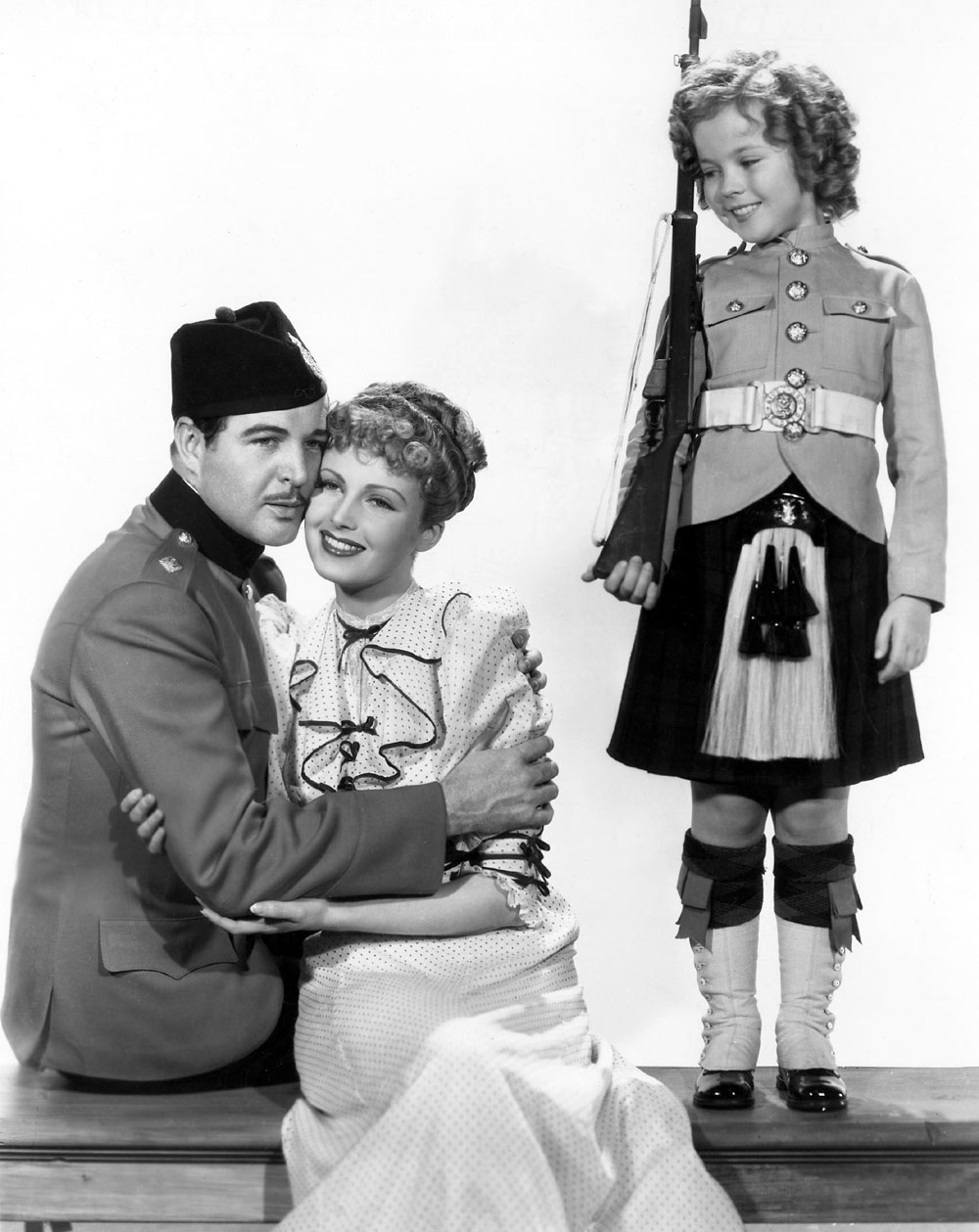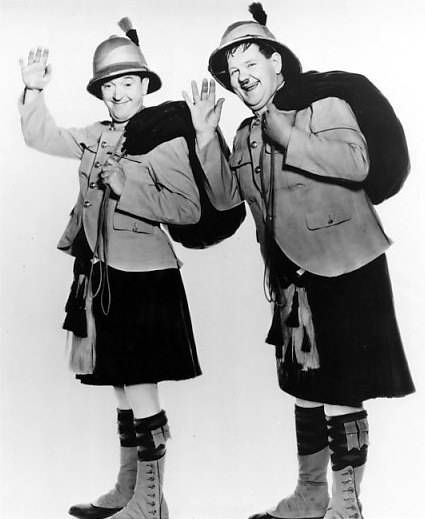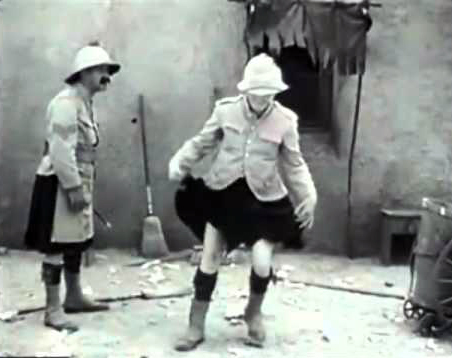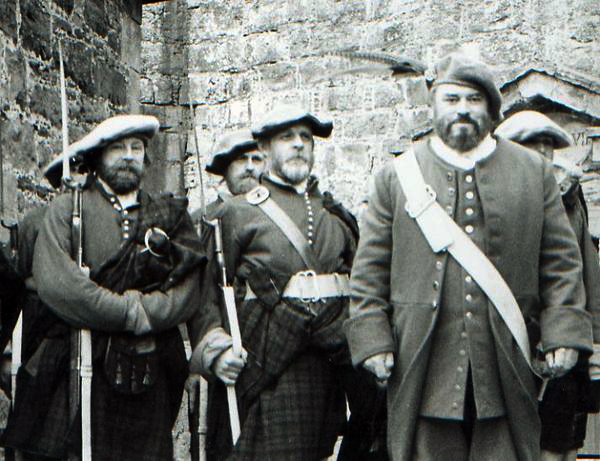The Black Watch Goes To The Moviesby Tom DoranHighland regiments have often appeared over the years in a slew of films - though in some cases they have had made-up regimental names (i.e. Caledonian Highlanders) or simply aren't mentioned by name at all. But one of the more famous ones, and one of the oldest that has appeared over and over in film has been the Black Watch (please see the Tartan section for the history of the tartan and regiment). Possibly because of its interesting and melodramatic name (not just its deeds - some of which aren't so noble), the regiment has received quite a bit of fame - hence the use of the regiment in films. Hollywood probably presumed people had possibly heard of them. Most people did know of the fighting valor of the Highland regiments (and less of their mutinies) - and the sight of kilted warriors marching in unison to the skirl of bagpipes often brought a thrill to viewers. One of this particular regiments early appearances was in The Black Watch (1929) - an early talkie by director John Ford that starred Victor McLaglen and Myrna Loy. Well received at the time, some reviews did however complain about McLaglen's lack of an appropriate accent. Considering his Scottish name (but clearly English birth and upbringing) one would have thought he might have given a good attempt at the accent - but no. Oddly enough, McLaglen has appeared in 3 films with Highland regiments - two clearly being the Black Watch. Ford's film took place in India during WWI - and was based on the novel King of the Khyber Rifles. Tyrone Power starred in a version of this story - but as a member of the Khyber Rifles (a real regiment), and not the Black Watch. George Steven's classic adventure film, Gunga Din (1939) found the Black Watch not only battling with members of an English regiment, but against the crazed hordes of Thuggee cult in India - ruled over by Eduardo Ciannelli's fanatical, but brilliant guru. The movie is played in a very light-hearted tone - and starts off with Cary Grant single-handedly defeating a whole platoon of the Black Watch in a wild punch-up - even tossing several out of windows. It's ludicrous, but great fun - and no insult was intended. When the three roguish soldiers (Douglas Fairbanks, Jr., Cary Grant and again - Victor McLaglen) are captured and used as bait by the guru, it's the Black Watch who come to the rescue. They are shown marching across the desert towards the Thug temple, singing Will Ye No Come Back Again? - the sound of the bagpipes alerts our heroes, who are thrilled that the "Scotties" are coming to rescue them. The regiment is called by name in this film and may be their most famous appearance. A ferocious battle ensues with a sort of modified Highland Charge even thrown into the mix. And though the real hero - Gunga Din - dies valiantly, the film nevertheless ends on an upbeat note, with pipers marching by camp-fire lights, playing a lament for the fallen, as a "resurrected" and now uniformed Gunda Din grins giddily from beyond the grave. Soldiers Three - a 1951 film starring Stewart Granger, David Niven and Walter Pidgeon, was based on a series of short stories by Rudyard Kipling, and also features the Black Watch. In many ways the film is meant as a take-off of Gunga Din. McLaglen also appears in John Ford's 1937 film Wee Willie Winkie with Shirley Temple - and though I'm not sure of the regiment, he appears in the kilt this time around as a crusty sergeant in a Highland regiment - with the pattern of the kilt looking suspiciously like the Black Watch. Again, it takes place in India. What people should know, is that Western Costume - the main supplier of costumes to the Hollywood film industry, even to this day - undoubtedly had a large stash of military kilts and uniforms from a previous order (possibly 1928's The Black Watch) - and most studios would just rent the uniforms that were available, rather than pay for a whole new slew of kilts (especially if the particular regiment was not named or didn't matter). Now whether Western Costume actually manufactured these kilts and other pieces of military kit, we don't know. They may indeed have put an order in from Scotland (and that's certainly worth looking into at some point). Clearly, the uniforms in several of these films are identical - and that leads one to believe that the studios rented what was available. In the classic Laurel & Hardy 1935 feature film Bonnie Scotland - very little of which takes place in Scotland by the way - features our two heroes joining a Highland regiment (the wholly fictitious Caledonian Highlanders) and ending up in India. The tartan pattern seems to be Black Watch - and the Hal Roach studios undoubtedly rented the same costumes that have appeared in other films (and would appear in later ones). Laurel, in a classic scene, does a wonderful little comic dance in his kilt. Jame Finlayson (from Larbert, Stirlingshire) plays their disgruntled and eternally frustrated sergeant. In David Lean's 1962 film Lawrence of Arabia The Black Watch can be seen, briefly in the background, marching. Pipes are playing as well - the regiment is not identified by name, but the tartan appears to be Black Watch (and they have red hackles on their helmets) - so it's a good chance they are. I've heard that background extras are dressed as the Black Watch in Robert Wise's 1966 film The Sand Pebbles - but I'm not sure how obvious they are. 1995 saw the modestly budgeted Scottish film about Bonnie Prince Charlie and the '45 called Chasing the Deer. Brian Blessed plays their commander and the regiment is scene at the end of the battle of Culloden - bayoneting dying rebel clansmen. The Black Watch, usually shown to be heroic, if not righteous soldiers are seen in a quite a different light in this film - and accurately it must be said. Michael Mann's 1991 epic Last of the Mohicans has several scenes featuring Highland soldiers who appear to be Black Watch as well. In one previously deleted scene, several Huron warriors attack a fort wearing the belted plaids of fallen Highland soldiers - for a moment confusing the British defenders. So, they've made their mark in films - and though this article is hardly complete - it seems certain that when a Highland regiment may make their way into a film again, there's a good chance the Black Watch will be involved.
Ian Rankin goes Walking by The Water of Leithby ceciliaIn a previous issue I introduced a new and wonderful app for Android devices. And while it worked on most of the phones I review it was NOT working at all with a particular tablet I had just gotten my hands on. So, I was delighted when a few days ago one of my favorite apps had an update. Not only did I have a new tour to explore, I could NOW explore all the wonderful features on the Galaxy Tab 7.7, (SAMSUNG Model: SCH-I815) and experience Ian Rankin's Edinburgh on a tablet with a nice large screen. So, after the update and required restart (which happens for all devices) I "Zoomed to Fill Screen" because the app looks much better that way, at least for me. This is a great feature of the Galaxy Tab 7.7 that I really love
The default on the tablet is "Stretch to fill screen" but for some apps like Ian Rankin's Edinburgh it makes it much easier to read if I tap the icon with the four arrows pointing out. The icon is at the bottom right of the screen.
Once set up so I can read everything clearer I can now peruse the tour elements. As we can see the new Tour is The Water of Leith which figures into some of Rankin's stories:
Compare this to the previous screengrab which was not Zoomed. This is much better. I really like this feature of the Galaxy 7.7:
The map is always one of my favorite features partly because I just love maps. But this is where you get a real feel for Where everything is. As with the previous versions, you tap on a pin and this links to more info - the tour images, and audio / video and whatever books are related to that location.
Tap the three horizontal lines at the bottom of the screen to get the map settings.
This lets you choose the Satellite view. Tap "My Location" to figure out exactly where you are relative to items on the map. If you have GPS turned on your device it will be more accurate, obviously. Unfortunately, I am not in Edinburgh so the map just jumped across the 'pond' to NY. Har har. I WISH I was in Edinburgh for a nice visit, but my excursions will have to be virtual.
This app just continues to delight and inspire. Not only do I want to read Every book in this series I want to visit every location. And for those people with iPhones this app is available for them from iTunes! |
